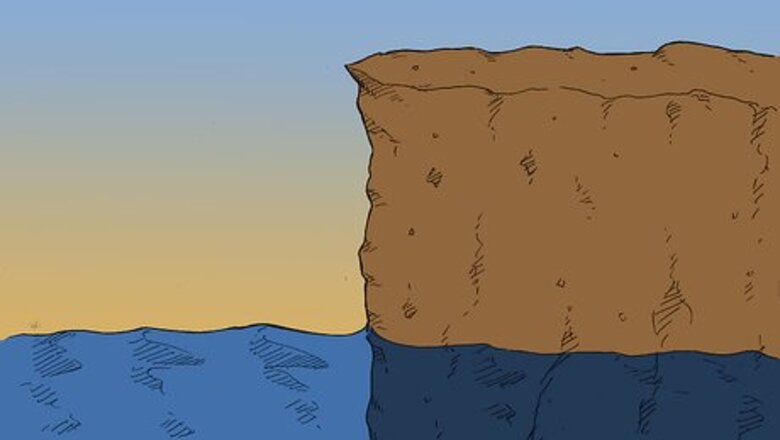
views
Finding the Right Location
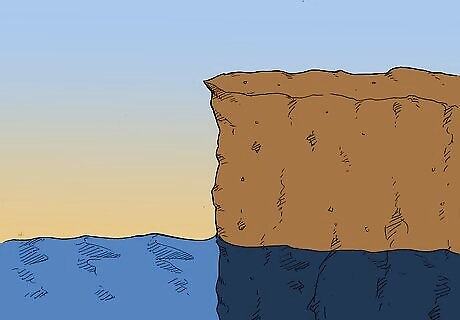
Find a popular cliff diving location. The safest places to cliff dive, especially if you are a beginner, are at cliffs that are frequently jumped from. You can either conduct your own research online, or ask locals in the area about popular cliff diving spots. If you speak with people who frequently dive at a popular spot, ask them if there is anything important you should know about the spot. Are there rocks in the water? Does the water have a strong current? Is there enough of a platform on the cliff to get a running start? Are there any local laws barring tourists from diving at a particular cliff? Some popular locations worldwide include: Rick’s Cafe in Negril, Jamaica; Buža Cafes in Dubrovnik, Croatia; Ord River in Kimberley, Australia; Brontallo in Ticino, Switzerland; the foothills of the Himalayas in Rishikesh, India; and Tar Creek Falls in Los Padres National Forest, California.
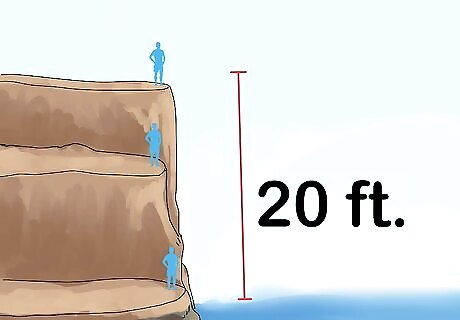
Look for cliffs that have multiple diving height options. You'll want to work up to the higher dives. Don’t get swept up in the adrenaline rush and jump from the highest cliff available. For beginners, start at cliffs that are around 20 feet (6.1 m) or lower. The average diving cliffs range between 20 feet (6.1 m) to 50 feet (15 m) high. While you can always dive from a cliff shorter than 20 feet (6.1 m), it is not recommended to drive off of cliffs that are higher than 50 feet (15 m), as serious injuries can occur more easily.
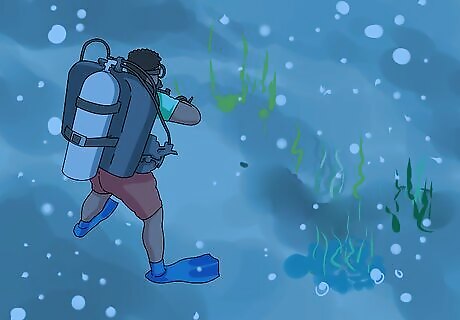
Check the water depth yourself. You want to be able to properly visualize your dive and landing area, so don’t take someone’s word on it. Grab a pair of goggles and swim around in the water. Make sure the water is deep enough for you to dive in, but also look for submerged rocks, branches, or other debris. The water needs to be at least 8 feet (2.4 m) deep. Add an extra 2 feet (0.61 m) of depth for every 10 feet (3.0 m) of cliff height.

Be aware of the water currents, and any riptides in the area. Even if you are a strong swimmer, it is very easy to get swept up in a riptide. If you get swept up in a current, try twisting your body to escape the current. Avoid jumping near waterfalls. While this may seem picturesque in films, waterfalls often create strong currents and undertows that can make the diving experience dangerous.
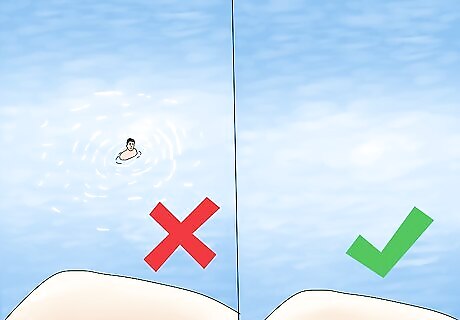
Make sure that no one is in swimming in the water below the cliff. You need to be completely focused before you jump. Having the water below the cliff free of swimmers will allow you to concentrate, and will also prevent anyone from getting hurt. For added safety, you can have friends rotate to be a lookout below the cliff. When one person is jumping, another can watch the water at the bottom of the cliff to make sure nobody swims in the way.
Taking Necessary Safety Precautions
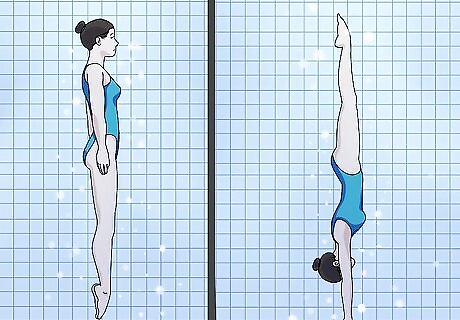
Practice diving feet first or head first at a local swimming pool. If you are nervous about your upcoming cliff diving adventure, then get some swimming time at a local pool. Jumping off a high-drive in a controlled environment will help you gain the confidence and the proper technique needed to go cliff diving. It is good to have strong swimming skills for cliff diving as you may encounter strong currents in the water. So if you need to, take some swimming lessons to brush up on the proper swimming techniques.

Bring a group of friends or someone experienced in cliff diving with you. Never cliff dive alone. Even if you take the proper precautions, it is very easy for something to go wrong. So grab a group of friends, or even someone experienced with the sport, to go with you. Make sure that someone has a cell phone and cell service. If something goes wrong, you need to be able to call for medical assistance. If the area you are in does not have cell phone reception, then keep a vehicle nearby so you and your friends can quickly leave.
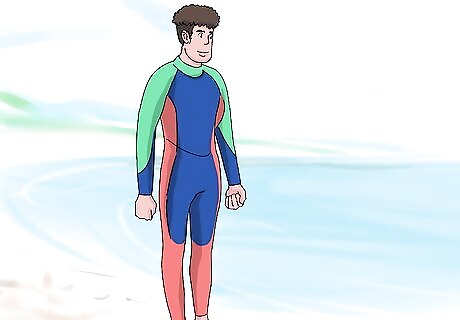
Wear tight-fitted clothing. You do not want to wear over-sized or baggy clothing while cliff diving. The force of diving through the water can rip loose clothing right off, and may even impair your swimming abilities. So try and wear a swimsuit or wet suit that can withstand the dive. Also consider adding drops of olive oil to your ears to avoid water pressure buildup. When you land in the water, pressure will build up in your ears. So before you jump, add a few drops of olive oil in your ears to alleviate the water pressure.
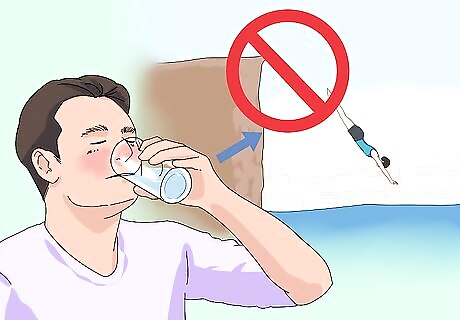
Do not cliff dive under the influence of drugs or alcohol. Diving under the influence can greatly impair your judgment and physical abilities. You need a clear head to execute your dive and swim up from the water’s depths. Cliff diving in itself is a very dangerous sport. If you or any of your friends are under the influence while out cliff diving, then greatly reconsider returning later in the day when you and your friends have sobered up.
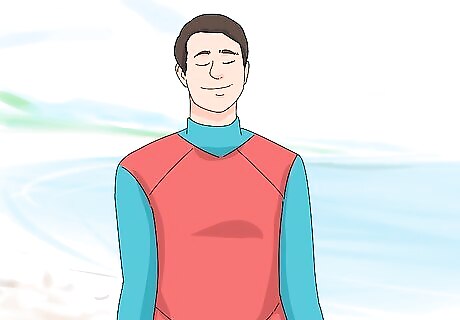
Don’t feel pressured to jump. If you do not feel comfortable jumping, then don’t. Any hesitation could lead to a serious injury. So don’t feel like you have to jump to impress anyone or to prove anything. Try watching a few of your other friends or a professional cliff dive first. This may alleviate some of your fears. If it doesn’t, don’t worry. You can still have just as much fun experiencing the moment in person.
Using the Proper Techniques to Cliff Dive
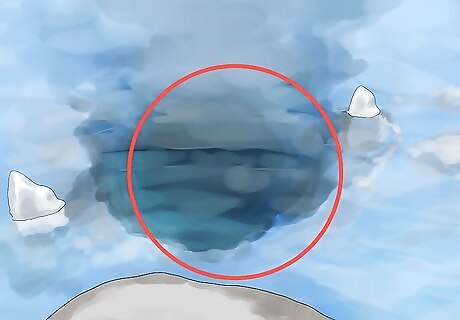
Pick a landing spot in deep water that is away from the cliff side. How far out you need to jump and where you need to land completely depends on the particular cliff you are diving from. You want to land where the water is deepest — providing that the deepest area of water does not have any obstructions or is not right up against the cliffside. Before you jump, focus on your landing spot and visualize your jump. Don’t let yourself become distracted.

Bend your knees at a 45-degree angle to spring off the cliff. You will need to propel yourself off the cliff using your bent knees to spring up and out away from the cliff. Jumping outwards will keep you away from the side of the cliff and protect you from harm. If you are diving feet first, you might need an additional running start. Take as many steps as you think you might need to spring your body away from the side of the cliff.

Use the pencil-diving technique to execute an easy jump. The pencil-diving technique is the easiest way to cliff dive as it requires you to jump feet first into the water. Most professional cliff divers jump in this manner, and it is the best technique to use if this is your first time cliff diving. Jump up and away from the cliff, diving feet first. Your body should be rigid like a pencil that is aimed at your landing spot in the water. Outspread your arms to steady your body when diving feet first. Your body might naturally veer off to the side when you jump. So use your arms like wings to quickly steady and straighten your body. Press your arms to your sides. Once your body is steady, pull your arms vertically, tight against your body. This will allow your body to slide into the water easily, rather than break through the surface. Straighten your back. Your body should not be bent when you hit the water. Folding or twisting your body to perform tricks while falling can easily result in a hard collision with the surface of the water. Having your back straight will decrease the pressure forced on your body from the impact.
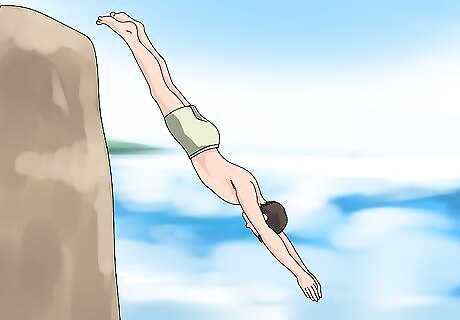
Dive head first for a more advanced cliff diving technique. Regardless of the cliff height, it is incredibly dangerous to dive head first when cliff diving. It is a technique often reserved for professional cliff divers. So if this if this is your first time cliff diving, avoid diving head first unless instructed otherwise by a professional. Jump outwards from the cliff and angle your body to dive head first. This motion is similar to the one you would do to dive into a swimming pool. You just want to make sure that your body is away from the side of the cliff, and aimed at your desired landing spot in the water. Straighten your body like an arrow with your arms outstretched over your head and against your ears, and tuck in your chin. Your arms will protect your ears from the water pressure once you make contact with the water’s surface. Layer the palm of one hand so it is on top of the back of your other hand. You want to hit the water with your layered hands first to protect your head. Your layered hands will safely cut through the surface of the water, and allow the rest of your body to glide into the water.
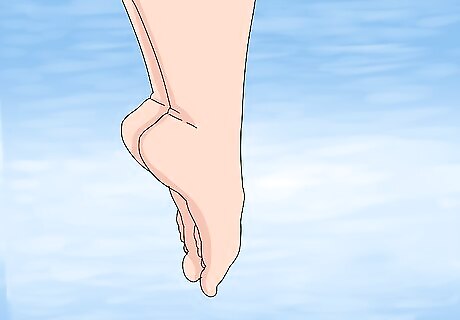
Point your toes and squeeze your legs together before hitting the water. This applies to both diving head first and diving feet first. You want your body to be rigid like a plank. This will ensure that your body will easily glide through the water’s surface rather than slam against it.

Exhale through your nose as you connect with the water. Your body will naturally want to exhale when you come in contact with the water. So exhale through your nose to prevent water from shooting up into your nose, and to prevent you from accidentally sucking in water through your mouth.
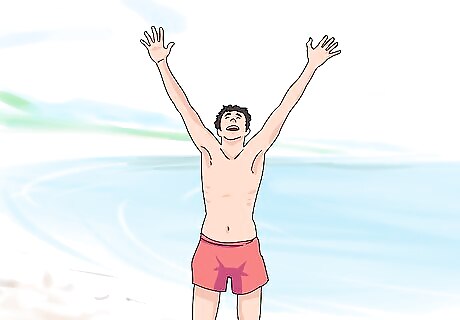
Enjoy your time spent diving through the air. It takes a lot of mental and physical preparation to go cliff diving. So once you are diving, make sure to enjoy the thrilling experience!
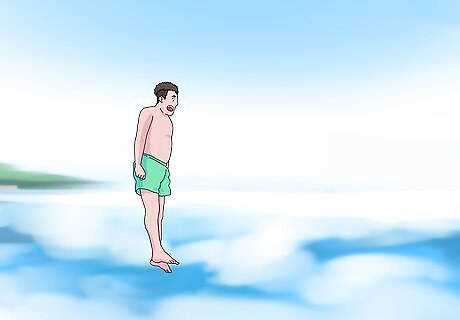
Keep your body straight as you enter the water. Depending on how high the cliff is, you can gain considerable speeds when diving. So when you break the surface of the water, focus on keeping your muscles tense until you slow down. Then, when you are ready, swim to the surface, and out of the way of the landing zone. The average speeds hit from cliff diving can be between 25 mph (11.176 m/s) to 45 mph (20.117 m/s).
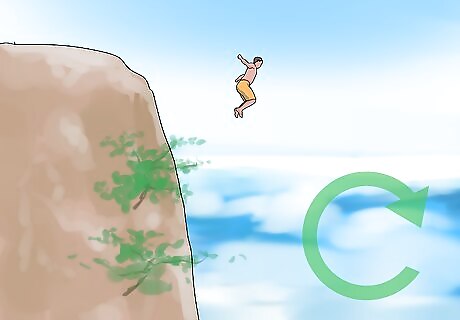
Continue to practice your technique on the lower cliffs. Just like with any sport, mastering the cliff diving technique takes practice. You want to be confident in your cliff diving ability before moving up to a higher cliff.




















Comments
0 comment